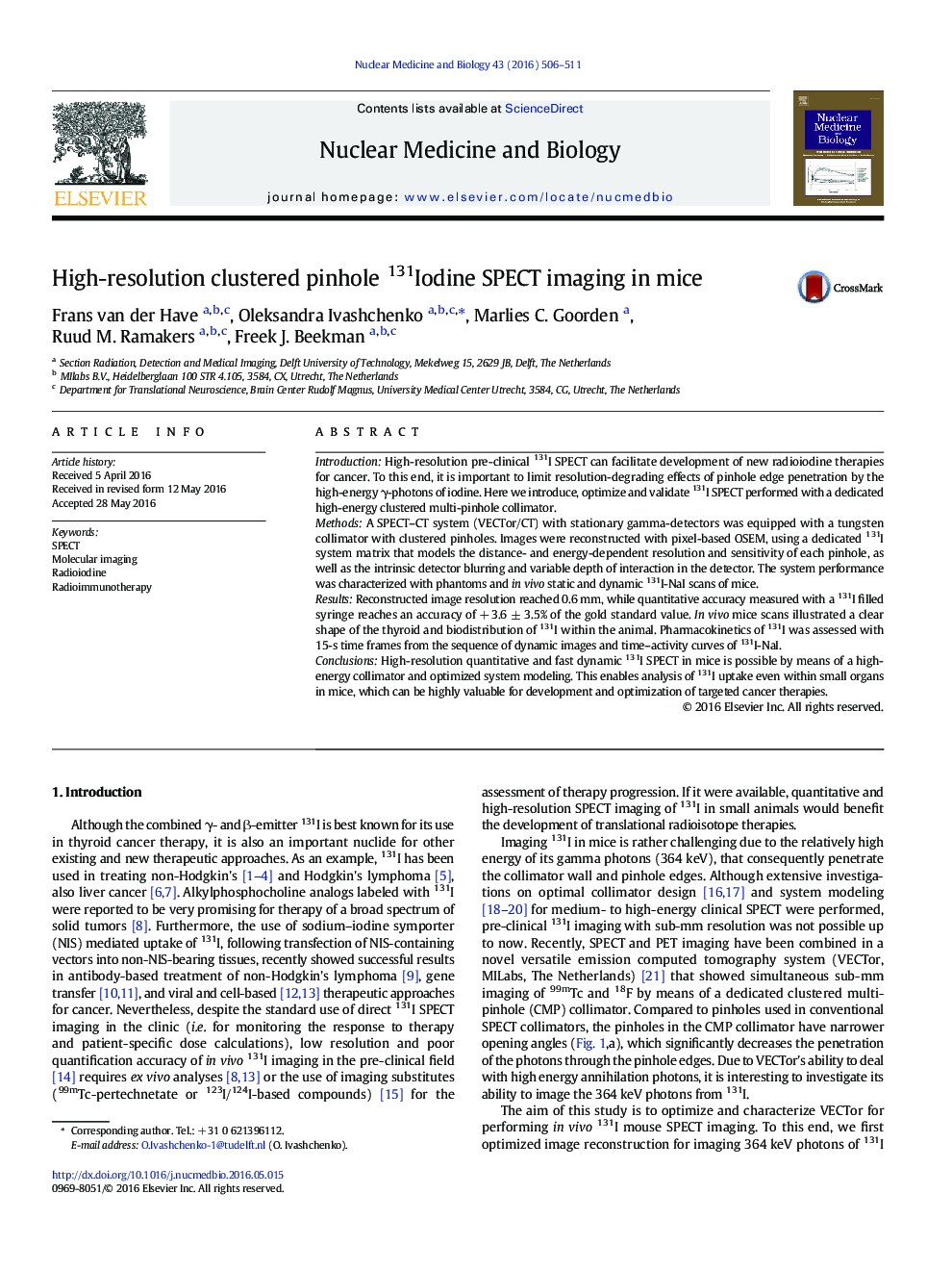| Article ID | Journal | Published Year | Pages | File Type |
|---|---|---|---|---|
| 2153300 | Nuclear Medicine and Biology | 2016 | 6 Pages |
IntroductionHigh-resolution pre-clinical 131I SPECT can facilitate development of new radioiodine therapies for cancer. To this end, it is important to limit resolution-degrading effects of pinhole edge penetration by the high-energy γ-photons of iodine. Here we introduce, optimize and validate 131I SPECT performed with a dedicated high-energy clustered multi-pinhole collimator.MethodsA SPECT–CT system (VECTor/CT) with stationary gamma-detectors was equipped with a tungsten collimator with clustered pinholes. Images were reconstructed with pixel-based OSEM, using a dedicated 131I system matrix that models the distance- and energy-dependent resolution and sensitivity of each pinhole, as well as the intrinsic detector blurring and variable depth of interaction in the detector. The system performance was characterized with phantoms and in vivo static and dynamic 131I-NaI scans of mice.ResultsReconstructed image resolution reached 0.6 mm, while quantitative accuracy measured with a 131I filled syringe reaches an accuracy of + 3.6 ± 3.5% of the gold standard value. In vivo mice scans illustrated a clear shape of the thyroid and biodistribution of 131I within the animal. Pharmacokinetics of 131I was assessed with 15-s time frames from the sequence of dynamic images and time–activity curves of 131I-NaI.ConclusionsHigh-resolution quantitative and fast dynamic 131I SPECT in mice is possible by means of a high-energy collimator and optimized system modeling. This enables analysis of 131I uptake even within small organs in mice, which can be highly valuable for development and optimization of targeted cancer therapies.
